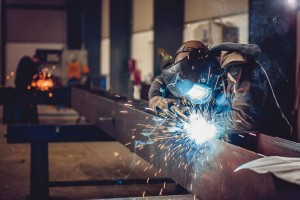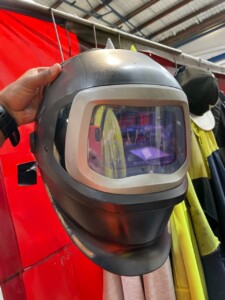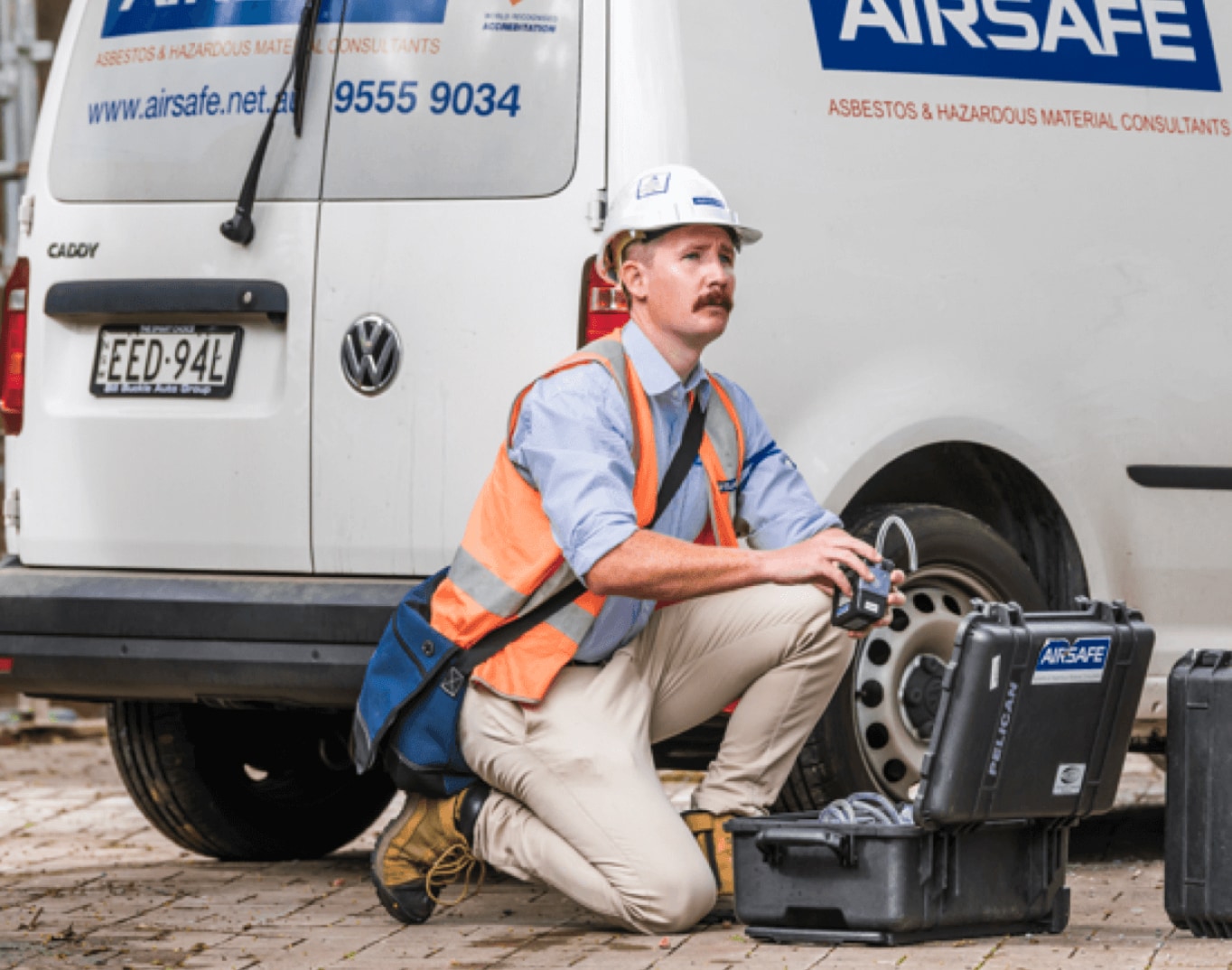What are welding fumes?
Welding fumes are a complex mixture of hazardous chemicals produced during welding.
Welding fumes contain a complicated and potentially hazardous combination of metals, metal oxides, silicates, and fluorides. When a metal is heated over its boiling point, its vapours condense into very small particles, resulting in the formation of fumes (solid particulates). Welding fumes often comprise particles from the electrode as well as the substance being welded.
The exact composition of welding fumes depends on a number of factors, including:
- the welding process
- the metal(s) being welded
- shielding gases or flux used
- the composition of the welding rod
- any contaminants or coatings present on the metal being welded.

What are the health effects of welding fumes?
The International Agency for Research on Cancer has classified welding fumes as a Group 1 Carcinogen (carcinogenic to humans).
Acute exposure to welding fumes and gases can result in eye, nose and throat irritation, dizziness and nausea.
Prolonged exposure to welding fumes may cause lung damage and various types of cancer, including cancer of the lungs, larynx or urinary tract.
Health effects from certain individual substances in fumes may include metal fume fever, stomach ulcers, kidney damage and nervous system damage. Prolonged exposure to manganese fume can cause Parkinson’s–like symptoms.

Exposure standards and your responsibilities
If you’re a person conducting a business or undertaking (PCBU), you have a responsibility to ensure that no person in your workplace is exposed to an airborne contaminant in a concentration that exceeds the relevant exposure standard.
Welding fumes can contain a number of different chemicals, each of which has its own exposure standard listed in the Workplace exposure standards for airborne contaminants.
However, there is also an overall workplace exposure standard for welding fumes (not otherwise classified). In 18 January 2024, this exposure standards was reduced from 5 mg/m3 to 1 mg/m3 as an 8-hour time weighted average – that is, it represents the maximum average airborne concentration of welding fumes calculated over an eight-hour working day, for a five-day working week.
How do you measure welding fumes ?
A monitoring program, including air monitoring, is required under Work Health and Safety Regulations to be conducted when:
- an employer is not certain on reasonable grounds that an airborne concentration of a hazardous substance is not exceeded, or
- when monitoring is necessary to determine the risk to worker health.
Ensuring workers are exposed to hazardous substances below the WES is the minimum legislative requirement, but good occupational hygiene practices aim to reduce exposure to levels as low as reasonably practicable.
Personal exposure air monitoring is generally undertaken over a representative period of time to the Australian Standard AS 3640-2009 Workplace atmospheres – Method for sampling and gravimetric determination of inhalable dust.
-
To determine the risk of exposure to fumes during welding, Airsafe will help you to identify what equipment and materials are being used and the level of fumes, dust, vapour and gases they are generating.
To give one example, phosphine is generated when steel which is coated with a rust- proofing compound is welded. High concentrations of phosphine gas are irritating to the eyes, nose and skin. The substance can have detrimental effects on the lungs and other organs. If this was the situation in your workplace, In order to prevent exposure to phosphine, you would first identify rust-proofed steel in the material to be welded.
-
If Airsafe’s monitoring team finds that concentrations of welding fumes are too high in your workplace, especially if they exceed workplace exposure standards, we will advise you on the best course of action to control people’s exposure to fumes.
Our advice follows the standard hierarchy of controls:
- Elimination of exposure to welding fumes, if possible, is always the preferred solution.
- If elimination is not possible, we look at substitution of hazardous chemicals with less hazardous ones.
- We then consider engineering controls such as isolation or ventilation systems.
- Next, we advise you on any administrative controls you may need to implement – for example, changes in your procedures around handling chemicals.
- Finally, we’ll advise you on what personal protective equipment is necessary to minimise your workers’ exposure to hazardous fumes.
-
Welding is a high-risk activity that potentially carries a number of hazards in addition to those associated with fumes. These include:
- radiation which can cause eye disorders and skin burns if not properly controlled, and is potentially carcinogenic in the case of UV radiation
- electrical risks associated with operating welding equipment, especially if it is not correctly maintained, or with electromagnetic fields generated by electric arc welding
- fire and explosion when heat, flames and sparks generated by welding come into contact with a fuel source
- burns and heat exposure from working with equipment that can reach as high as 6000 degrees Celsius
- compressed and liquefied gases uses in certain types of welding that can cause asphyxiation among other hazards
- high noise levels, especially generated by plasma arc welding
- lead exposure when welding on steel painted with leaded paints or older materials contaminated with lead
- ergonomic hazards such as working in confined spaces, falls, and back strain.
SafeWork NSW has a code of practice for welding activities, and has summarised the main points in this video:
Contact us for a welding fumes risk assessment today
Airsafe’s trained and qualified occupational hygienists can be dispatched today to conduct exposure monitoring and provide recommendations on health monitoring.
With our holistic approach to occupational hygiene, we can also help you to identify, evaluate and control other possible hazards from welding such as excessive heat and noise.
For any questions about welding fumes, call Airsafe on 1300 888 338.




